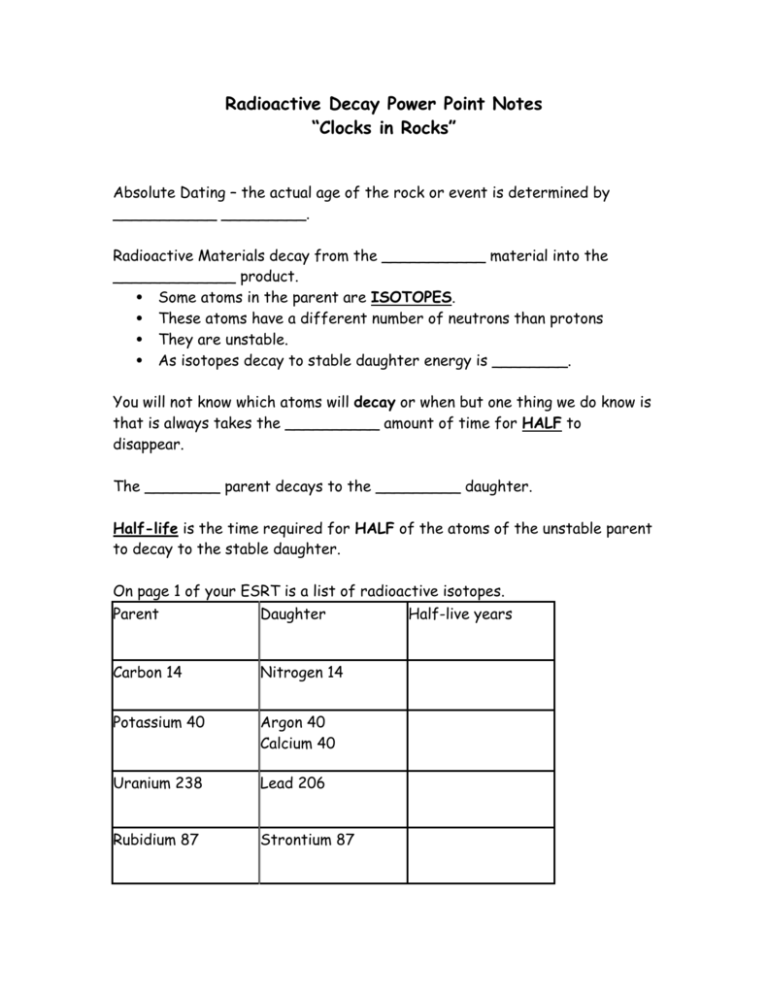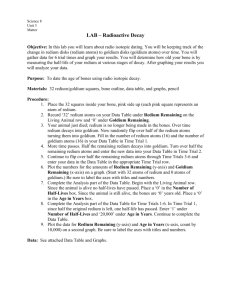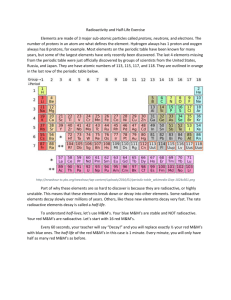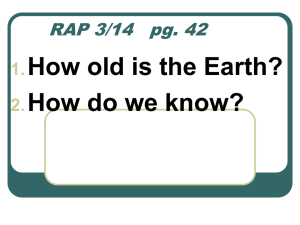Radioactive Decay Power Point Notes
advertisement

Radioactive Decay Power Point Notes “Clocks in Rocks” Absolute Dating – the actual age of the rock or event is determined by ___________ _________. Radioactive Materials decay from the ___________ material into the _____________ product. • Some atoms in the parent are ISOTOPES. • These atoms have a different number of neutrons than protons • They are unstable. • As isotopes decay to stable daughter energy is ________. You will not know which atoms will decay or when but one thing we do know is that is always takes the __________ amount of time for HALF to disappear. The ________ parent decays to the _________ daughter. Half-life is the time required for HALF of the atoms of the unstable parent to decay to the stable daughter. On page 1 of your ESRT is a list of radioactive isotopes. Parent Daughter Carbon 14 Nitrogen 14 Potassium 40 Argon 40 Calcium 40 Uranium 238 Lead 206 Rubidium 87 Strontium 87 Half-live years Each _____ -_______, the amount of atoms gets cut in ________. Since you don’t know how many atoms you started with, a RATIO of parent to daughter will tell you how many half-lives have gone by. 0 half-life 100% parent 0% daughter 1 half-life 50% parent daughter 2 half-lives parent 75% daughter 3 half-lives 12.5% parent daughter 4 half-lives parent daughter The shape of the curves showing radioactive decay of parent and the formation of the stable decay product of the daughter are ____________ for all radioactive isotopes. However, the time intervals would differ to the different length of the half-life period. Summary: Half-lives Continue indefinitely Random and spontaneous Not affected by ___________ and pressure Not affected by mass or volume of parent Uranium-238 that crystallized at the same time Earth formed has undergone approximately how many half-lives of radioactive decay? A) four half-lives B) two half-lives C) three half-lives D) one half-life How many half-lives has the parent undergone? ____________________



![tutorial #14 [nuclear physics and radioactivity] .quiz](http://s3.studylib.net/store/data/008407305_1-1884988a9e5162a6b7a2b0d0cf8c83c5-300x300.png)






